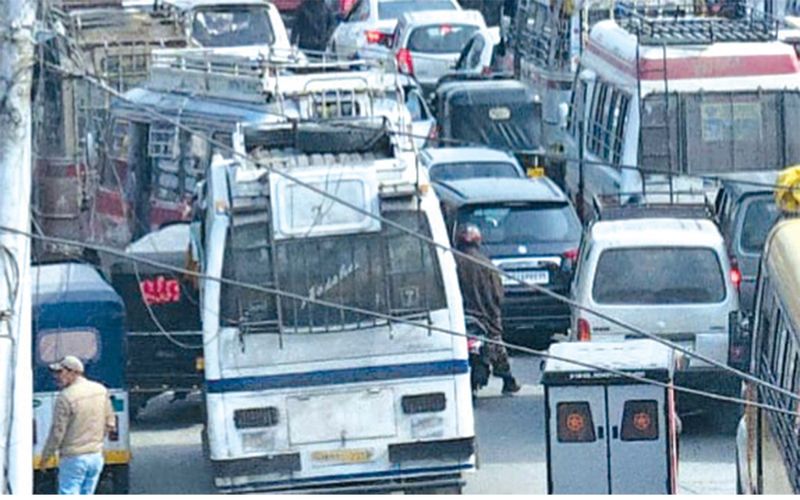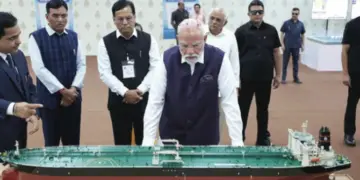Traffic management in urban areas like Srinagar poses a formidable challenge. While the authorities do not possess a magic wand to resolve these complications overnight, there is always room for improvement. With strategic planning and efficient utilization of the existing infrastructure, the mobility of traffic can be significantly enhanced.
Every morning, on my way to the office, I witness a troubling sight—patients and attendants, often with small children, darting across the Bypass near the Children’s Hospital and JVC Bemina, navigating a stream of fast-moving traffic. The absence of a zebra crossing or pedestrian signal here turns every crossing into a dangerous gamble.
While the government’s relocation of hospitals from crowded city areas to the outskirts is commendable, the supporting infrastructure has not kept pace. Traffic bottlenecks, unsafe pedestrian access, and the absence of basic road safety measures undermine the very benefits this relocation was meant to bring.
A simple, well-marked pedestrian crossing, proper traffic signals, and stricter speed control in this zone could save lives and prevent accidents. Public health facilities deserve safe, accessible surroundings—not just new buildings in new locations.
Fundamental elements such as clear signposts, properly marked zebra crossings, well-maintained footpaths, pedestrian subways, and functional traffic signals are crucial tools for transforming urban traffic chaos into a system of smooth and safe movement. However, these elements are either absent or poorly managed across the city. Traffic management must be rooted in evidence-based strategies, implemented with both foresight and accountability.
Srinagar’s roads are increasingly becoming hazardous due to a combination of administrative negligence and public indiscipline. The absence of awareness about traffic rules, widespread unruliness, unregulated encroachments, and lack of pedestrian infrastructure have rendered the roads dangerous and disorganized. The situation is exacerbated by the visible torpor of the authorities, who seem unsure of how to make the traffic ecosystem more coherent and citizen-friendly.
Zebra crossings are nearly invisible, parking facilities are grossly inadequate, and roadside encroachments are rampant. Authorities boast of imposing hefty challans on violators, but such punitive measures have merely encouraged corruption without ensuring long-term compliance. Monetary fines alone cannot reform a chaotic system. What is needed is a combination of education, enforcement, and infrastructure.
Mandatory training and licensing reforms are essential, especially for commercial vehicle drivers. Pedestrian behavior also requires regulation — jaywalking in high-traffic zones must be discouraged, and fines should be levied on those who ignore zebra crossings and footpaths, provided these facilities are properly in place. Traffic police must go beyond merely checking vehicle documents and actively monitor both vehicular and pedestrian movement to prevent mishaps.
The problem of underage driving, particularly among tipper and Tata Mobile operators, is deeply concerning. Many of these minors are ill-informed about the responsibilities and risks of driving. Furthermore, rash driving and dangerous stunts — especially among young motorcyclists — are increasingly becoming a menace, particularly during winter months. Restricting two-wheeler movement during December and January, especially for teenagers, could reduce these avoidable tragedies.
Overloading of commercial vehicles is another persistent issue that needs immediate attention. It not only endangers lives but also contributes to road congestion and structural wear of city roads. In such cases, suspending the driver’s license for 15 to 20 days may prove more effective than monetary fines, which often lead to bribery rather than behavioral reform. Moreover, the process for acquiring commercial driving licenses must be tightened with mandatory training and rigorous testing.
The exponential increase in the number of vehicles has not been matched by a proportional expansion of road infrastructure. Widening city roads, constructing more flyovers and subways, and enforcing one-way traffic norms in congested areas can help ease bottlenecks. Integration of modern public transport options, such as metro rail and waterway-based logistics where feasible, can also alleviate pressure on the roads.
Educational institutions and government offices, currently concentrated in central urban pockets, should be gradually shifted to suburban areas to reduce congestion. During peak hours, traffic personnel must be stationed near schools and colleges to ensure safe and orderly movement.
Srinagar needs a holistic and forward-looking traffic policy — one that integrates urban planning, civic education, smart infrastructure, and strict enforcement. The transformation from chaos to order is not beyond reach, but it requires a collective effort from the government, civil society, and every road user.
sajad_08phd12@nitsri.ac.in





